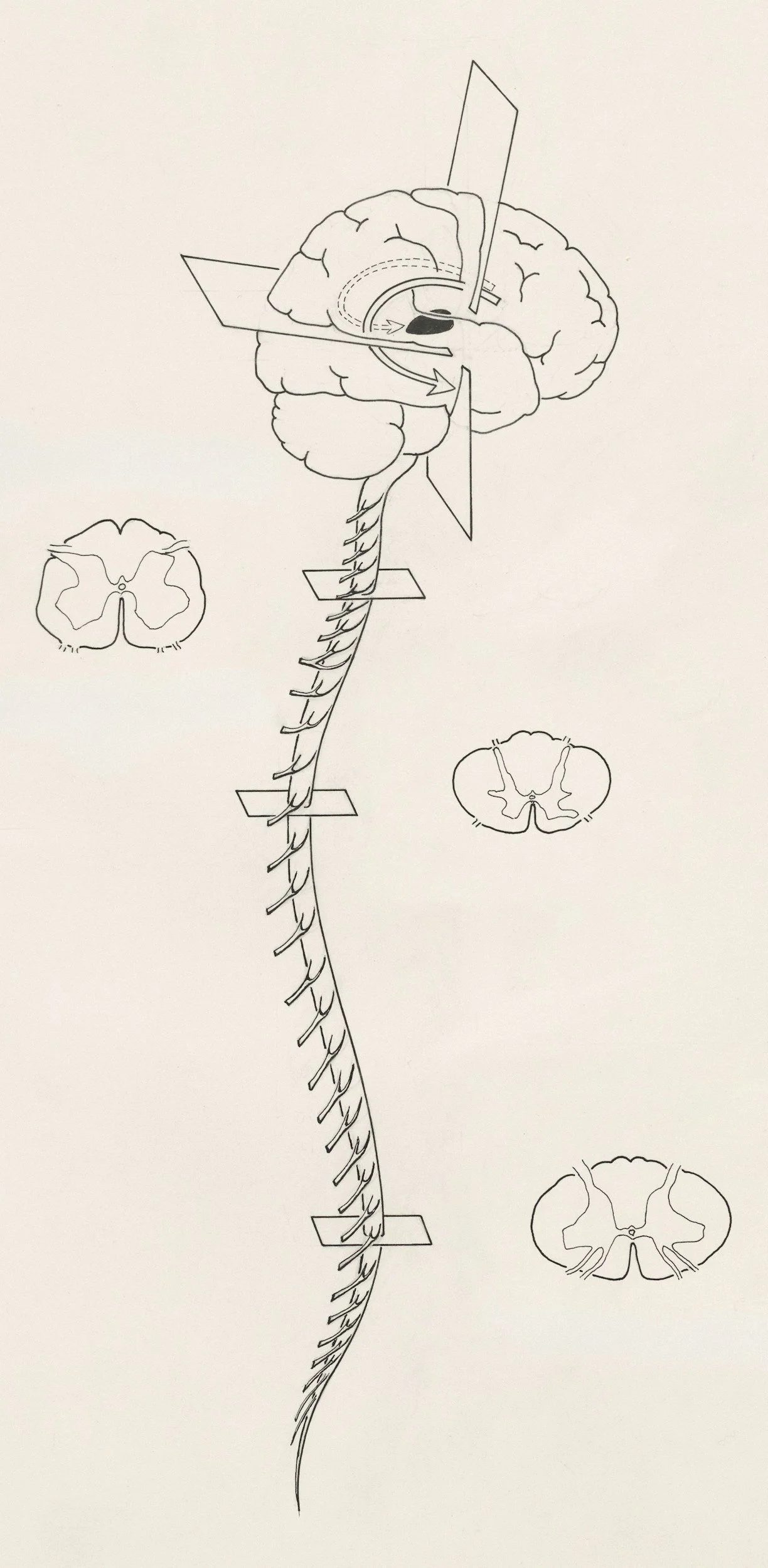Unlocking the Power of Your Child’s Nervous System
If you’re a parent, you’ve probably noticed how your child’s mood, energy, and focus can shift from day to day. One week they’re sleeping soundly and full of curiosity, the next they’re restless, fidgety, or melting down over little things. It’s easy to wonder if they’re just “going through a phase”—but what if those patterns were actually your child’s body speaking to you?
Just like adults, kids have rhythms too. And at the center of it all is their nervous system—the control center that governs sleep, digestion, emotions, and growth. When that system is balanced, kids adapt easily, learn quickly, and bounce back from stress. When it’s out of sync, you see it in their behavior, energy, and even their posture.
Chiropractic care for children isn’t just about fixing back pain—it’s about helping their nervous system communicate clearly so their body can do what it’s designed to do: grow, heal, and thrive.
Let’s explore what’s really happening beneath the surface—and how to know when your child might need support.
Your Child’s Nervous System: The Fuse Box of the Body
Think of your child’s nervous system like a fuse box in your home. When every switch is aligned, lights stay bright, the fridge hums, and everything runs smoothly. But if one circuit misfires, lights flicker—or go out entirely.
In kids, that “short circuit” often looks like sleep struggles, immune issues, digestive trouble, or focus challenges. Tiny misalignments in the spine—called subluxations—can interfere with how the brain and body communicate, throwing the whole system off balance.
Gentle pediatric chiropractic adjustments help restore that connection. The goal isn’t just comfort—it’s clarity: helping the nervous system run on full power so your child can feel grounded, calm, and connected.
Reading the Signs: When Your Child’s System Is Asking for Help
Children rarely say, “My nervous system feels out of balance.” Instead, their body speaks through patterns.
Common clues include:
Trouble falling or staying asleep
Big emotions or frequent meltdowns
Difficulty focusing or sitting still
Recurring ear infections or tummy aches
Sensory overload—lights, sounds, or textures that feel “too much”
Posture changes, like slouching or uneven shoulders
These aren’t random quirks—they’re signals. When the nervous system struggles to regulate itself, even small stressors can feel overwhelming. Chiropractic care helps restore the body’s ability to adapt, easing those daily battles and helping kids feel more at ease in their own skin.
How Misalignment Affects Growth and Development
As children grow, their bones, joints, and muscles shift constantly. Growth spurts, heavy backpacks, screen time, and tumbles during play can all add up to subtle misalignments. Over time, these small shifts can interfere with how the brain sends messages to the rest of the body.
When the spine is aligned, movement feels effortless. Growth plates develop evenly. Coordination improves. Kids sleep deeper, focus longer, and recover faster. Alignment isn’t just about posture—it’s about how every system communicates and grows together.
You can even do a few simple home checks:
Have your child stand against a wall—do their shoulders line up evenly?
Watch them bend forward to touch their toes—does one side move differently?
Notice their backpack—does it pull to one side or leave red strap marks?
These little cues can reveal a lot about your child’s alignment—and whether their body needs extra support.
A Visit That Feels Safe and Supportive
A pediatric chiropractic visit is designed with gentleness in mind. Adjustments for babies and kids don’t involve cracking or force—they often look like light fingertip pressure or a sustained touch. Many children giggle, relax, or even fall asleep during care.
The chiropractor first checks how your child’s nervous system is functioning—looking for areas that may be “overloaded” or out of sync. Each adjustment helps reset the system, like turning on a dimmer switch to bring the body back into balance.
Parents often notice changes quickly: calmer bedtimes, smoother mornings, fewer meltdowns, better digestion. Small shifts that ripple through the entire household.
What’s That Popping Sound?
If you’ve ever heard a “pop” or “crack” during a chiropractic adjustment, you’re not hearing bones moving or anything breaking—what you’re actually hearing is a tiny bubble of gas releasing from the joint space.
Here’s what’s really happening:
Joints are surrounded by a fluid called synovial fluid that nourishes and cushions them. When gentle pressure is applied, the joint space slightly shifts, and small gas bubbles form and release—similar to the sound you hear when you open a can of sparkling water. It’s called cavitation, and it’s completely normal and harmless.
For children, adjustments are typically so light that you may not hear any sound at all. In fact, most pediatric adjustments use no more pressure than you’d use to test the ripeness of a tomato.
The “pop” isn’t the goal—it’s just a natural byproduct of movement and release. What matters most is the improved communication between the brain and body afterward.
Helping your child understand this can ease fears:
You can explain it as a “bubble popping sound,” not a bone cracking sound.
Remind them it means their body is getting back in balance.
Many kids even find it fun once they know what it means!
Beyond Symptoms: Growing with Ease
Your child’s body is intelligent. Every symptom—whether it’s a tummy ache, tension, or fatigue—is communication. When we listen to those signals instead of suppressing them, we help kids build resilience that lasts a lifetime.
Chiropractic care works by supporting the foundation of all healing: the nervous system. When the brain and body are in sync, children adapt more easily, grow more confidently, and move through life with greater ease.
The Bottom Line
Your child isn’t “difficult,” “clumsy,” or “too sensitive.” Their nervous system is simply asking for balance.
Gentle chiropractic care helps restore that balance—unlocking their natural ability to rest, learn, and thrive.
Because when your child feels regulated and resilient, your whole family feels it too.
Things You Can Do at Home
Supporting your child’s nervous system health begins with small, consistent steps:
Encourage movement and play.
Free play and outdoor time help integrate the body’s sensory systems and discharge stress naturally.Create calm routines.
Predictable rhythms—especially around bedtime—help signal safety to your child’s nervous system. Dim lights, soft voices, and consistent schedules go a long way.Prioritize posture and backpack habits.
Keep backpacks light (no more than 10% of your child’s weight), worn on both shoulders, and check posture regularly.Nourish with whole foods.
Balanced meals with protein, healthy fats, and minerals like magnesium support steady energy and focus.Limit screen time and add sensory breaks.
Encourage “unplugged” moments with stretching, deep breaths, or quiet play to reset the nervous system.Listen before you fix.
When your child seems off, pause and observe their patterns—sleep, digestion, emotions. These clues help you respond with understanding rather than frustration.
Ready to Support Your Child’s Growth and Calm?
If you’re seeing signs that your child’s system might be struggling to regulate—sleep issues, posture changes, big emotions, or recurring tummy troubles—it might be time to check their alignment.
Our team offers gentle, kid-centered chiropractic care designed to restore balance and help your child thrive from the inside out.
Schedule a consult today to see how chiropractic care can help your child’s body find its natural rhythm again—and bring more ease to your entire household.





